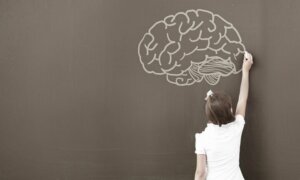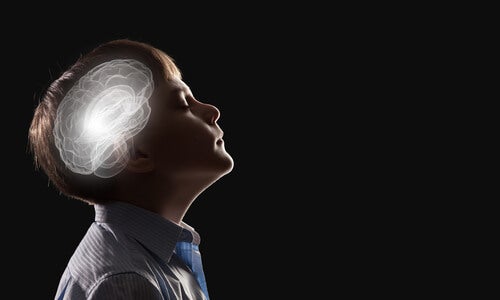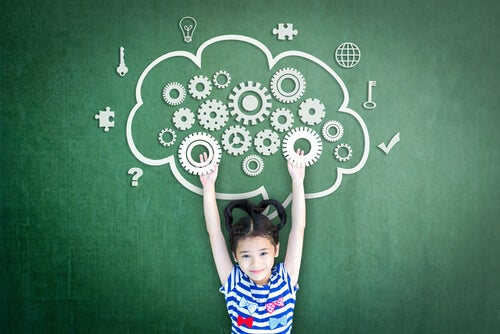Pediatric Neuropsychology

In the last few decades, there’s been an increased interest in the learning and developmental problems that children face. That interest led to the creation of the field of pediatric neuropsychology. It looks at the existing relationship between the maturation process of the central nervous system and behaviors during childhood (1). This sub-specialty of neuropsychology emphasizes neurodevelopment assessments. These are important for the prevention and early detection of possible disorders (2).
Chavez (2003) argues that, to determine if a child has neurodevelopment problems, you must first understand the normal organization and development of the central nervous system. That information about the nervous system and its development is the foundation for the prevention and detection of different disorders.
Rains (2003) also talks about alterations in the nervous system and brain maturity due to prenatal, perinatal, and postnatal causes. In almost every case, these alterations cause neuropsychological disorders in childhood. Consequently, side effects increase if healthcare professionals and parents don’t detect them on time. That’s why the researchers insist on the importance of pediatric neuropsychology.
Other authors, such as Weber and Reynolds (2004), highlight the influence of environmental factors on brain development. Thus, their area of study is the association between brain plasticity and traumatic childhood events. The authors explain that. in the United States, among the cases of child abuse (traumatic events), between 27% and 100% develop physical, behavioral, social, cognitive, or emotional problems.
As a result, it seems that pediatric neuropsychology research focuses on the risk factors and possible psychopathological and neuropsychological disorders that those factors can cause in children (1).

The source of brain damage in childhood
According to authors Cuervo and Avila, the etiology of childhood brain damage can be classified according to diverse indicators based on the moment in which they happen:
- Prenatal. Toxoplasmosis, fetal malnutrition, fetal abuse, etc.
- Perinatal. Hypoxia, meconium…
- Postnatal. Craneocephalic trauma, infections, malnutrition…
Here, you can see how important it is for the healthcare provider to take a complete medical history when evaluating a patient. It should include all of the information related to the characteristics and conditions of development during the first years of life. Some authors (5, 6, and 7) classify the main causes of brain damage according to the type of damage. The categories are:
- Traumatic injuries.
- Vascular issues (hemorrhages).
- Infections (meningitis, toxoplasmosis).
- Metabolic dysfunction (galactosemia).
- Neurotoxic problems.
Also, these authors emphasize the importance of brain plasticity and child neuropsychological maturity to properly evaluate post-injury consequences and recovery.
Pediatric neuropsychology evaluation
Some authors argue that a pediatric neuropsychological evaluation isn’t the same as an adult assessment. That’s because the primary goal of adult neuropsychology is to study the development of cognitive function and its relationship to brain maturity over the course of an individual’s life. Pediatric neuropsychology, on the other hand, focuses on:
- The differences in brain maturation from birth to adolescents between boys and girls.
- What kind of distinctions there are between the adult brain and the developing brain. Scientists have observed, for example, that the pattern for white matter development is exactly the inverse of the development of grey matter.
Neuropsychological maturity
Experts have a concrete definition of neuropsychological maturity. It’s the level of organization and development that allows the body to carry out cognitive and behavioral functions appropriate to the person’s chronological age. They highlight changes during development, especially those in childhood.
The intervention and evaluation that the neuropsychologist uses should, as a jumping-off point, set specific goals depending on the child’s age (1).

Evaluation of pediatric neurodevelopment
During childhood, the etiology of neuropsychological disorders is located in two groups (1):
- Firstly, subjects with a specific affection around the development.
- Secondly, people who suffer from this usually have a fairly normal development at first. However, they then suffer from a pathological accident. That accident leaves marks that alter development in a specific or general way.
Areas that pediatric neuropsychology should evaluate (10)
- Motor skills
- Manual dexterity.
- Left-right orientation.
- Orofacial praxis.
- Verbal control of motor ability.
- Perception
- Visual.
- Auditory.
- Tactile.
- Language
- Receptive and expressive ability with spoken language.
- Psychoeducational aspects.
- Memory
- Verbal and non-verbal.
- Long- and short-term.
Some pediatric neuropsychological tests
- Child/adult neuropsychology questionnaire.
- Pediatric neuropsychological test.
In conclusion, it’s clear that neuropsychological intervention in early childhood should be considered important all over the world. In societies like this one, detection, rehabilitation, and stimulation encourages neuropsychological maturity. That’s why development fields such as pediatric neuropsychology are so important. The goal, after all, is to keep kids safe and healthy.
All cited sources were thoroughly reviewed by our team to ensure their quality, reliability, currency, and validity. The bibliography of this article was considered reliable and of academic or scientific accuracy.
1. Martínez, Á. C., & Matamoros, A. M. Á. (2010). Neuropsicología infantil del desarrollo: detección e intervención de trastornos en la infancia. Revista iberoamericana de psicología: ciencia y tecnología, 3(2), 59-68.
2. Rains, G. D., & Campos, V. (2004). Principios de neuropsicología humana. México: McGraw-Hill.
3. Chávez, R. (2003). Neurodesarrollo neonatal e infantil. México: Editorial Médica Panamericana.
4. Weber, D. A., & Reynolds, C. R. (2004). Clinical perspectives on neurobiological effects of psychological trauma. Neuropsychology Review, 14(2), 115-129.
5. Montañes, P. & De Brigard, F. (2005). Neuropsicología Clínica y Cognoscitiva. Bogotá: Universidad Nacional.
6. Ardila, A., & Rosselli, M. (2007). Neuropsicología clínica. Editorial El Manual Moderno.
7. Portellano, J. A. (2005) Introducción a la Neuropsicología.
8. Capilla, A., Romero, D., Maestu, F., González, J., & Ortiz, T. (2003). Neuropsicología del desarrollo y neuroimagen. Revista de Neurología, 37, 667-697.
9. Portellano, J. A., Mateos, R., Martínez, R., Granados, M., & Tapia, A. (1999). Cumanin. Cuestionario de madurez neuropsicológica infantil.
10. Manga, D., & Ramos, F. (2001). Evaluación de los síndromes neuropsicológicos infantiles. Revista de Neurología, 32(7), 664-675.
This text is provided for informational purposes only and does not replace consultation with a professional. If in doubt, consult your specialist.








